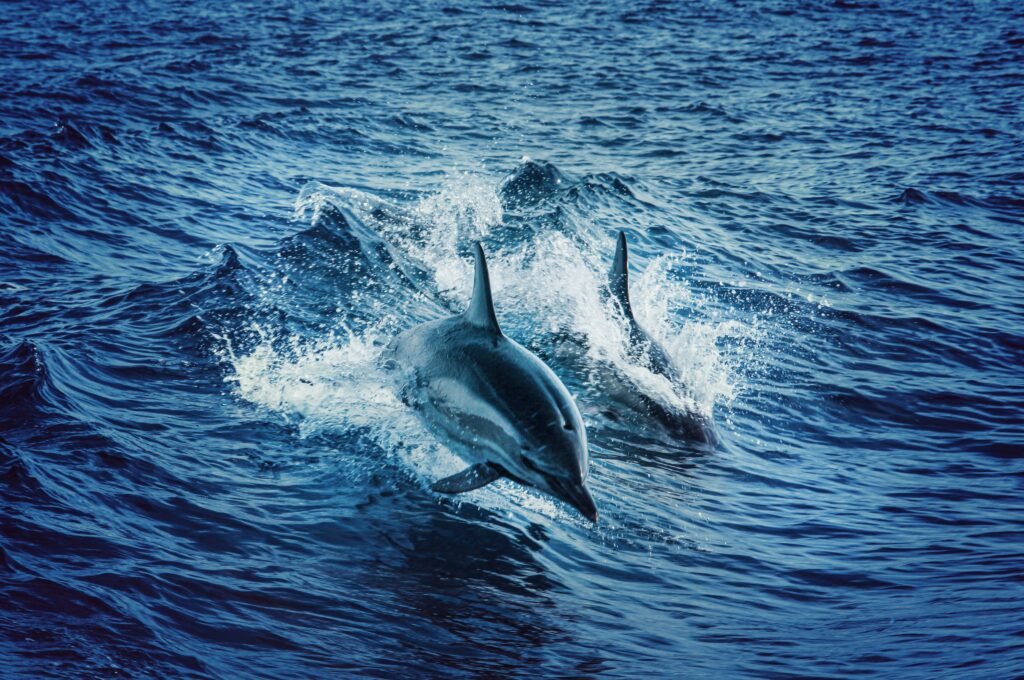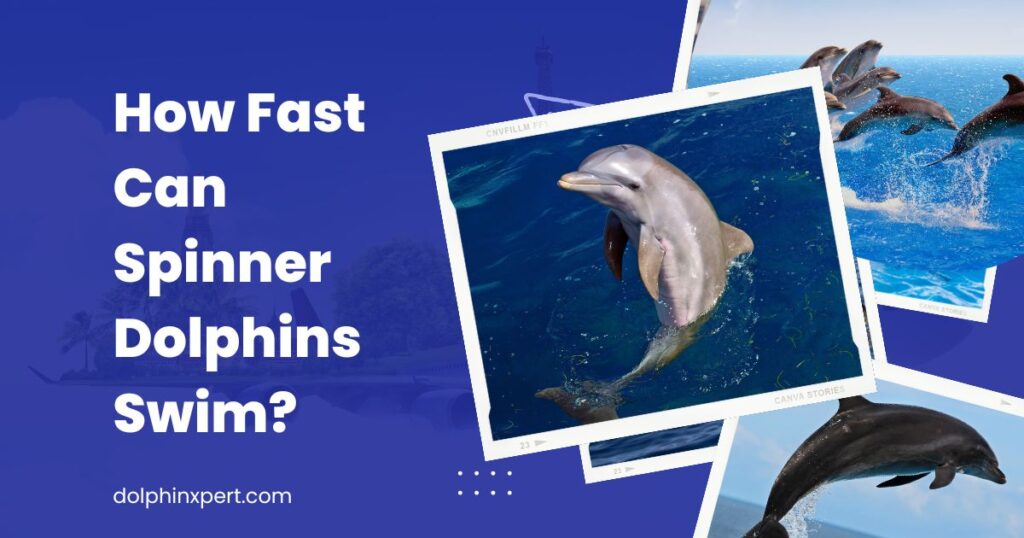
What Sea Do Dolphins Live In? Dolphins primarily inhabit the world’s oceans, with species found in both tropical and temperate regions. They are commonly seen in seas such as the Pacific, Atlantic, Indian, and even the Mediterranean.
Welcome to our exploration of the seas that dolphins call home. Join me as we delve into the diverse habitats where these charismatic creatures thrive, captivating you with their playful demeanor and remarkable intelligence.
Dolphins have captured our fascination for centuries, inhabiting various parts of the world and adapting to a range of oceanic environments.
Table of Contents
The Global Distribution of Dolphins
Dolphins are widely spread across various aquatic settings globally and are well-known for their versatility. [What Sea Do Dolphins Live In?]
From the icy seas of the Arctic and Antarctic to the tropical depths of the Indian Ocean and beyond, they are found all over the world. Now let’s explore the particular areas in which dolphins flourish:
Pacific Ocean
A wide range of dolphin species can be found in this vast body of water. Dolphins such as the common dolphin, bottlenose dolphin, and spinner dolphin are commonly seen along the western coast of the Americas, which stretches from California to the beaches of South America.
These clever animals decorate the coral reefs in the tropical paradises of the South Pacific islands, captivating onlookers with their mischievous activities.
Atlantic Ocean
In the North and South Atlantic, dolphins are common. Species like the Atlantic bottlenose dolphin are common along North America’s eastern coast, mesmerizing observers with their elegant movements.
The ocean’s rich biodiversity is further enhanced by frequent sightings of species like the common dolphin and the short-beaked common dolphin off the coastlines of Europe and Africa on the other side of the Atlantic.

Indian Ocean
Dolphin activity is concentrated in the Indian Ocean. Dolphins such as the Indo-Pacific humpback dolphin and the spinner dolphin are common and found in abundance everywhere from the Arabian Sea to the beautiful waters surrounding the Maldives and Sri Lanka.
They highlight the ecological value of the area while delighting both locals and visitors with their acrobatic performances. [What Sea Do Dolphins Live In?]
Mediterranean Sea
Despite being a semi-enclosed sea, the Mediterranean hosts several dolphin species. The common dolphin and the striped dolphin, among others, navigate the basin’s waters, from the iconic Strait of Gibraltar to the picturesque Aegean Sea.
Despite the challenges posed by human activities in this densely populated region, dolphins continue to thrive, symbolizing resilience in the face of adversity.
Arctic and Antarctic Seas
Dolphins are so abundant that they even inhabit the frigid waters of the polar regions.
In these icy seas, the killer whale, sometimes known as the orca, is the top predator and feeds on a wide variety of fish and marine mammals.
The fragile balance of ecosystems in these far-off and hostile places is highlighted by their powerful presence.
Dolphins are important components of marine ecosystems in each of these areas, acting as markers of biodiversity and ocean health. [What Sea Do Dolphins Live In?]
However, human activities such as pollution, habitat degradation, and climate change are posing an increasing threat to their environments.
Therefore, it is crucial to undertake conservation initiatives that safeguard these magnificent animals and their habitats in order to guarantee both their continuous existence and the maintenance of the marine legacy of our world.
Factors Influencing Dolphin Distribution
Water Temperature
Dolphin species exhibit preferences for specific temperature ranges. While some species, like the bottlenose dolphin, thrive in warmer tropical waters, others, such as the orca, are adapted to colder climates.
Water temperature influences the distribution of prey species, which in turn dictates the presence of dolphins in certain areas. [What Sea Do Dolphins Live In?]

Prey Availability
Dolphins are opportunistic feeders, preying on a variety of fish, squid, and crustaceans.
They are often found in areas where prey abundance is high, such as near coastlines, coral reefs, and upwellings where nutrient-rich waters support diverse marine life.
Changes in prey availability can lead to shifts in dolphin distribution as they follow their food sources.
Ocean Currents
Dolphin distribution patterns are significantly shaped by ocean currents. Dolphins may use ocean currents to access locations with larger concentrations of prey or to traverse longer distances more effectively.
On the other hand, powerful currents can act as obstacles or difficulties for dolphins, which might affect their distribution and mode of travel.
Human Activities
Human activities pose significant threats to dolphin populations, affecting their habitats, prey availability, and overall well-being.
Conservation efforts are crucial to mitigate these impacts and ensure the long-term survival of dolphins in the wild.
| Human Activities | Impact on Dolphin Populations |
|---|---|
| Overfishing | Threatens dolphin populations by depleting prey species and disrupting food chains. |
| Habitat Destruction | Causes loss and fragmentation of dolphin habitats, reducing suitable environments for feeding, breeding, and resting. |
| Pollution | Contaminates dolphin habitats with chemicals, plastics, and marine debris, leading to ingestion, entanglement, and adverse health effects. |
| Coastal Expansion | Leads to habitat loss and degradation, further reducing available habitats for dolphins. |
| Noise Pollution | Disrupts dolphin communication, navigation, and foraging behaviors, causing stress and behavioral changes. |
| Increased Marine Activity | Results in collisions, disturbance of feeding and breeding grounds, and habitat degradation, impacting dolphin ecosystems negatively. |
Human Impact on Dolphin Habitats
Habitat Degradation
Coastal development, including the construction of ports, marinas, and waterfront properties, can result in habitat loss and fragmentation for dolphins.
Dredging activities, land reclamation, and coastal pollution further degrade their habitats, reducing the availability of suitable environments for feeding, breeding, and resting.
Pollution
Pollution from industrial runoff, agricultural runoff, and urban waste can contaminate marine ecosystems, posing serious threats to dolphin health.
Chemical pollutants, plastics, and marine debris can accumulate in dolphin habitats, leading to ingestion, entanglement, and adverse health effects.

Overfishing
Overfishing depletes dolphin prey populations, disrupting food chains and forcing dolphins to compete for dwindling resources. [What Sea Do Dolphins Live In?]
Bycatch, the unintentional capture of dolphins in fishing gear, is a particularly concerning issue that can result in injury or death for these marine mammals.
Entanglement in Fishing Gear
Fishing gear, including as nets, lines, and traps, can entangle dolphins. This is particularly dangerous in locations where dolphin habitats and fishing activity coexist.
Entanglement is a serious hazard to dolphin populations around the world since it can cause harm, drowning, and even death.
Shipping Traffic and Noise Pollution
Via noise pollution, vessel strikes, and habitat degradation, increased maritime traffic in coastal areas can disturb dolphin habitats.
Dolphin communication, navigation, and foraging behaviors can be disrupted by underwater noise from ship engines, sonar systems, and construction operations. This can cause stress and behavioral abnormalities in the dolphins.
Conservation Efforts
Worldwide efforts are made to protect dolphins and their environments through conservation. Certain areas are designated as marine protected areas so that dolphins can live there unhindered by harmful human activity.
The goal of habitat restoration initiatives is to repair damaged surroundings and provide the necessary conditions for dolphin populations to thrive. The goal of fishing regulations is to lessen the direct effect of human activity on dolphin populations.
Examples of these regulations include the use of sustainable fishing methods and the reduction of bycatch. Public awareness campaigns encourage people to take action to protect dolphins by educating the public about the value of dolphin conservation.
By providing opportunities for visitors to see dolphins in their natural environments, ecotourism projects encourage responsible ocean stewardship and a greater awareness of the animals’ beauty and ecological significance.
Together, these efforts strive to ensure a brighter future for dolphins and the marine ecosystems they inhabit. [What Sea Do Dolphins Live In?]
Frequently Asked Questions (FAQs)
Which Seas Are Known For Hosting Dolphin Populations?
Dolphins can be found in various seas around the world, including the Pacific Ocean, Atlantic Ocean, Indian Ocean, Mediterranean Sea, and Arctic and Antarctic Seas.
Do Dolphins Prefer Certain Types Of Seas Over Others?
Dolphins are highly adaptable and can inhabit a wide range of marine environments, from tropical seas with warm waters to colder climates in polar regions.
Are There Specific Species Of Dolphins Associated With Certain Seas?
In truth, certain oceans are home to a variety of dolphin species. In the Pacific and Atlantic Oceans, for instance, sightings of common and bottlenose dolphins are widespread, whereas in the Indian Ocean, indo-Pacific humpback dolphins are more numerous.
Do Dolphins Migrate Between Different Seas?
Yes, a large number of dolphin species travel seasonal distances across several oceans in search of food and suitable habitats, as well as between feeding and breeding regions.
Are There Any Seas Where Dolphins Are Rarely Found?
Although dolphins are common and may be found in most oceans and seas, there are some sites where dolphin populations may be scarce or nonexistent, such as landlocked waters or areas with harsh environmental conditions.
Conclusion: What Sea Do Dolphins Live In?
In wrapping up, it’s clear that dolphins are real champs when it comes to making themselves at home in all sorts of ocean spots, from warm Pacific waters to chilly polar seas.
But hey, they’re not without their challenges, thanks to us humans and our activities messing with their habitats. Luckily, there are folks out there working hard to keep their homes safe and promote eco-friendly practices.
By looking out for the seas where dolphins live, we’re giving future generations the chance to enjoy these smart and fun-loving creatures just like we do.

Mr. Das, a certified pharmaceutical scientist, holds a Bachelor of Science in Pharmaceutical Sciences and passionately contributes to dolphin conservation as a member of the committee in Bangladesh.


